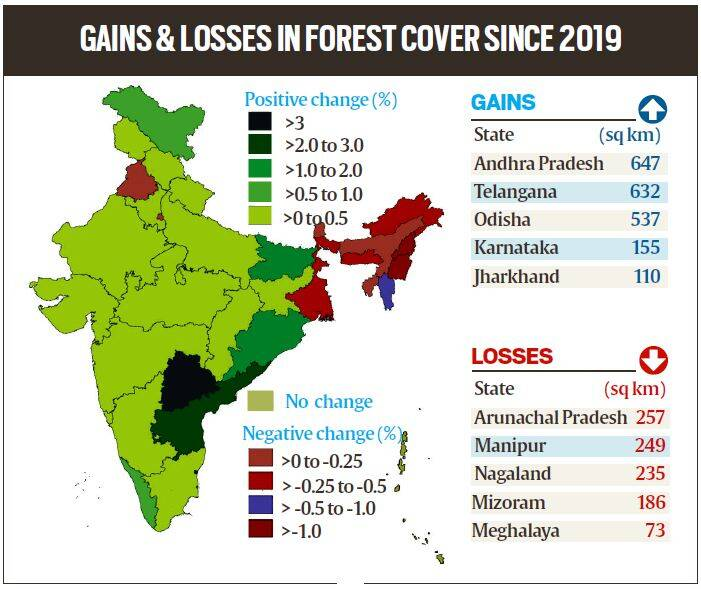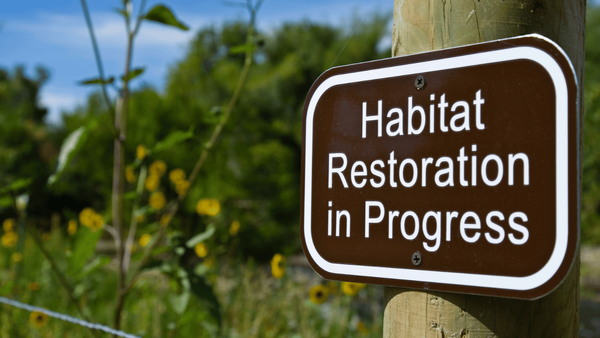Table of contents
India has implemented several schemes to address forest degradation and promote tree planting. Here are three significant schemes:
1. National Afforestation Programme (NAP)
- Objective: To promote afforestation and eco-restoration of degraded forests and adjoining areas.
- Implementation: The scheme is implemented through Forest Development Agencies (FDAs) at the state level.
- Components:
- Afforestation: Planting trees in degraded forest areas.
- Eco-Restoration: Restoring the ecological balance in degraded areas.
- Capacity Building: Training and capacity building of local communities and forest officials.
- Achievements: Since its inception, the NAP has contributed significantly to increasing forest cover and improving the quality of degraded forests.
2. Green India Mission (GIM)
- Objective: To enhance ecosystem services like carbon sequestration, biodiversity conservation, and provision of goods and services such as fuel, fodder, and timber.
- Implementation: Part of the National Action Plan on Climate Change (NAPCC), GIM is implemented through state forest departments and other agencies.
- Components:
- Afforestation and Reforestation: Planting trees in degraded forest lands and other landscapes.
- Restoration of Ecosystems: Restoring wetlands, grasslands, and other ecosystems.
- Community Participation: Involving local communities in planning and implementation.
- Achievements: GIM aims to increase forest and tree cover by 5 million hectares and improve the quality of forest cover on another 5 million hectares.


3. Compensatory Afforestation Fund Management and Planning Authority (CAMPA)
- Objective: To ensure that compensatory afforestation is carried out as per the conditions stipulated by the government when forest land is diverted for non-forest purposes.
- Implementation: Managed by the National CAMPA Advisory Council and implemented by state CAMPA bodies.
- Components:
- Compensatory Afforestation: Planting trees to compensate for the loss of forest land.
- Forest Conservation: Funding for forest conservation and management activities.
- Wildlife Protection: Supporting wildlife protection and habitat improvement projects.
- Achievements: CAMPA funds have been utilized for various afforestation and conservation projects, contributing to the increase in forest cover and biodiversity conservation.
Green Cover in India (since 2019)

Challenges and Recommendations
Challenges:
- Encroachment: Nearly 10 million hectares of forests are under encroachment.
- Dependence on Forests: Approximately 27.5 crore people depend on forests for subsistence.
- Loss of Forest Land: Around 5.7 million hectares of forest land have been lost for non-forestry purposes since Independence.
- Post-Planting Measures: Lack of adequate post-planting measures and monitoring.
- Community Participation: Limited involvement of local communities in tree planting drives.
Recommendations:
- Adequate Financing: Ensure sufficient funding for afforestation and restoration projects.
- Community Involvement: Actively involve local communities in planning and implementation.
- Technical Considerations: Use scientific methods and technical expertise for effective restoration.
- Post-Planting Care: Implement robust post-planting measures and monitoring to ensure the survival and growth of planted trees.
- Public Awareness: Conduct awareness campaigns to educate the public about the importance of forest conservation and restoration.
Conclusion
India's efforts to restore degraded forests and increase forest cover through schemes like NAP, GIM, and CAMPA are commendable. However, addressing the inherent challenges and ensuring active community participation, adequate financing, and technical considerations are crucial for the success of these initiatives. By adopting a holistic approach, India can achieve its targets for forest restoration and contribute significantly to global climate change mitigation and biodiversity conservation.

Write UnLimited Course (2 Months)
Write any GS question/essay from any source, and we will evaluate it for you.
